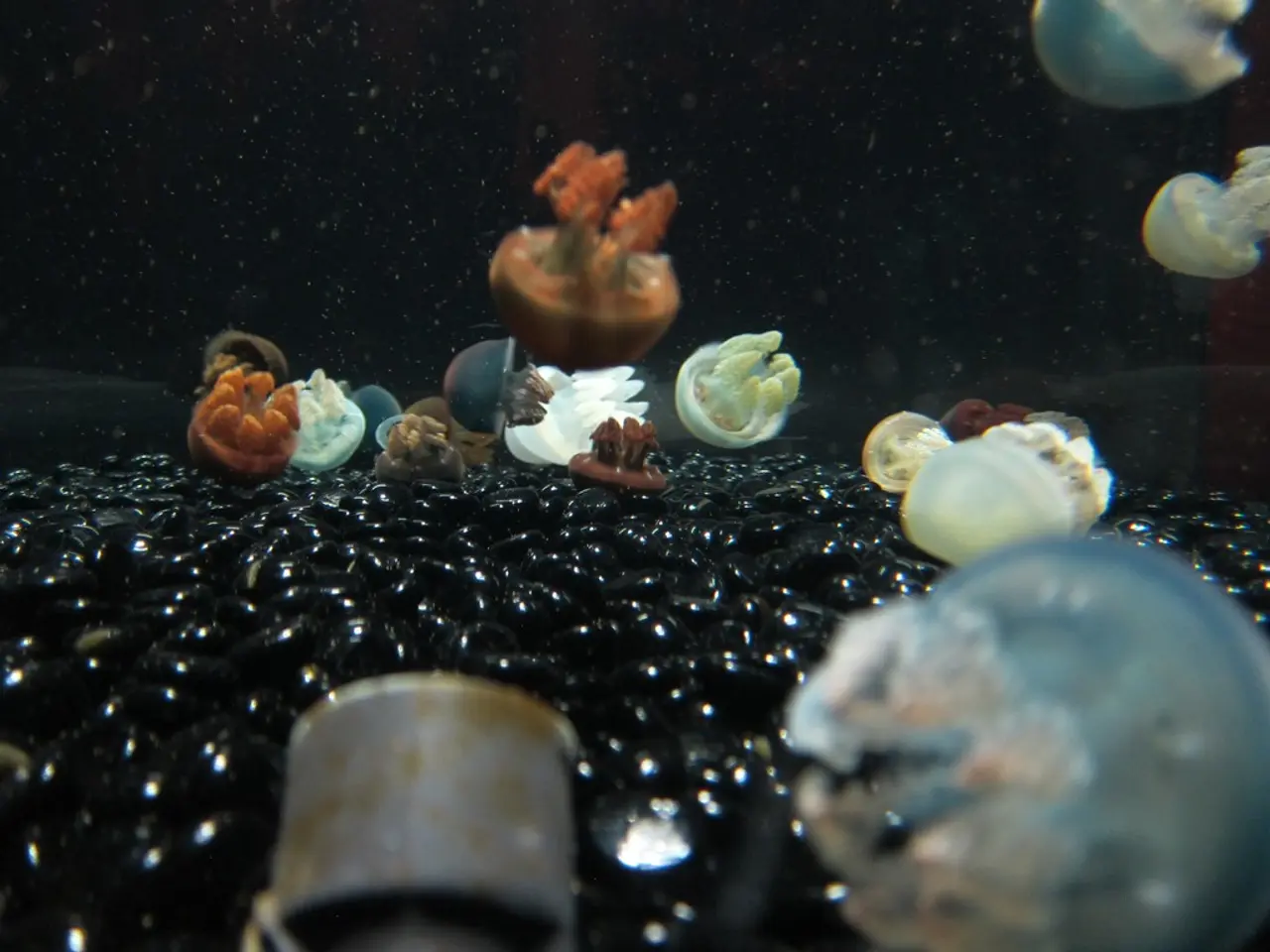Sticky New Hydrogel Retains Rubber Duck on Rock During Crashing Ocean Surge
In a significant leap forward for water-resistant glues and hydrogels, a team led by Jian Ping Gong at Hokkaido University has developed the strongest underwater-adhesive hydrogels to date. These hydrogels, which have been published in the prestigious journal Nature, combine the flexibility of soft polymers with the stubborn grip of aquatic clingers [2][3][5].
The team's approach was a unique blend of biological inspiration, data mining, and machine learning. They analysed adhesive proteins from various organisms, including archaea, bacteria, eukaryotes, and viruses, by mining the NCBI protein database [1][2]. This analysis helped them identify amino acid sequences responsible for adhesion in wet environments.
Using this knowledge, they synthesised 180 hydrogel formulations based on these biological motifs. Then, they employed AI and machine learning to optimise polymer networks for maximal adhesive performance underwater, across various surfaces and salinity levels, including seawater [1][2][3][5].
The resulting hydrogels are remarkable. They exhibit instant, strong, and repeatable adhesion underwater, with adhesive strengths exceeding 1 MPa [2][3][4]. To put this into perspective, a postage-stamp-sized piece (2.5 x 2.5 cm) could theoretically support about 63 kg (an adult human) [2][3][5].
One of the hydrogels, R1-max, could hold with a force of 147 kilopascals underwater, a force inspired by a protein from Escherichia bacteria [2]. Another hydrogel, R2-max, could seal a 20-millimeter-wide hole in a high-pressure water pipe instantly and could be removed and reapplied without losing grip [2][4][5].
The potential applications for these hydrogels are vast. Experiments showed the hydrogel could glue a rubber duck to a rock enduring ocean tides and waves, and seal a 20mm hole at the bottom of a 3m pipe filled with water, preventing leakage for up to five months [2][4][5]. This suggests potential in biomedical engineering and marine technology.
Gong’s team envisions applications for their hydrogels in medical adhesives, marine glues for ship repairs, and soft robotic components that maintain their grip underwater [1][2][3]. Ting Xu, a materials scientist at the University of California, Berkeley, praised Jian Ping Gong’s work on hydrogels, stating that it reflects more than just clever algorithms [2][3].
This breakthrough represents a significant step forward in water-resistant glues and hydrogels, with broad potential applications from surgery to underwater construction and repair [1][2][3]. The team's findings were published in Nature and selected for the journal’s cover in August 2025, highlighting the high impact and novelty of this advancement [2][3].
In summary, Gong’s team pioneered a biologically inspired, AI-optimized hydrogel adhesive that works instantly and strongly underwater, outperforming previous technologies in strength, durability, and versatility.
Read also:
- EPA Administrator Zeldin travels to Iowa, reveals fresh EPA DEF guidelines, attends State Fair, commemorates One Big Beautiful Bill
- Innovative Company ILiAD Technologies Introduces ILiAD+: Boosting Direct Lithium Extraction Technology's Efficiency Substantially
- Nuclear Ambitions at a U.S. Airport Spark Controversy, With Opposition Swelling
- Haval H6 Hybrid Analysis: Delving into Engine Performance and Fuel Efficiency








